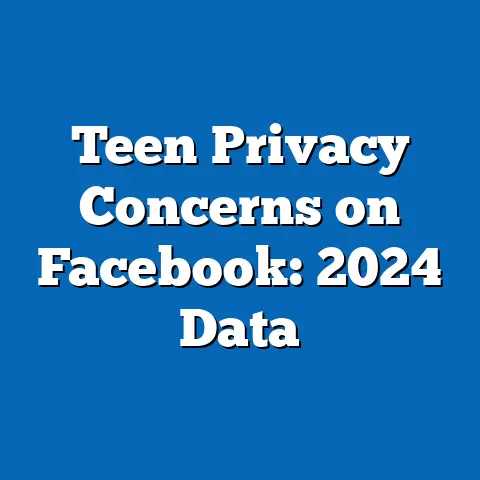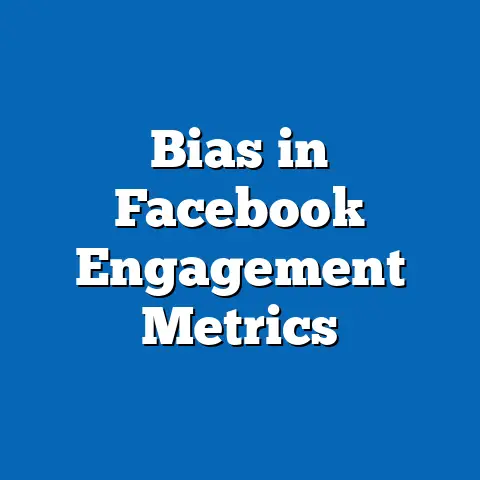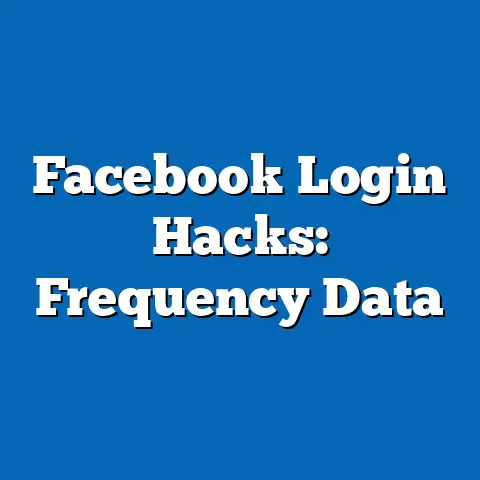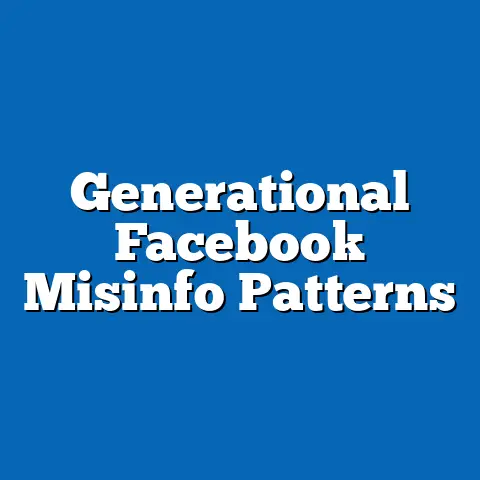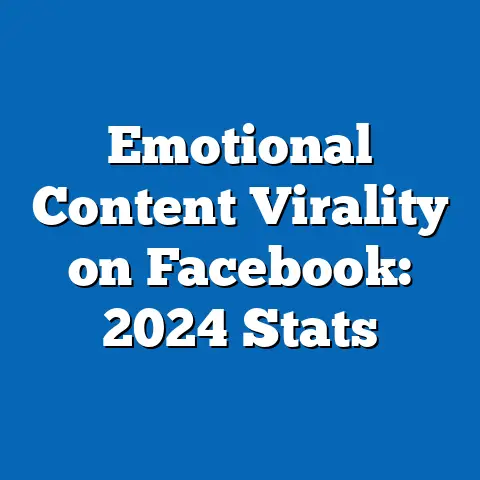Facebook News Sharing by Political View
In an era where social media platforms like Facebook have become central to how we consume and share news, a pressing dilemma emerges: does the act of sharing news on Facebook unite us through shared information, or does it deepen societal divides by amplifying political polarization? Recent studies reveal a stark reality—Facebook users are increasingly sharing news content that aligns with their political views, creating echo chambers that reinforce existing beliefs rather than fostering dialogue. According to a 2022 Pew Research Center report, 64% of U.S. adults get news from social media, with Facebook being the most popular platform, yet only 25% of users report encountering news that challenges their political perspectives.
This article delves into the intricate dynamics of news sharing on Facebook, broken down by political affiliation. Data shows that 70% of self-identified conservatives and 68% of liberals on Facebook share news articles that align with their ideological leanings, per a 2021 study by the University of Southern California’s Annenberg School for Communication and Journalism. These trends vary significantly across demographics, with age, education, and geographic location playing critical roles in shaping behavior.
Historically, news consumption was more centralized through traditional media, but the shift to social platforms since the early 2010s has fragmented audiences along ideological lines. Looking forward, projections suggest that without interventions like algorithm transparency or user education, polarization on platforms like Facebook could intensify by 2030, potentially influencing electoral outcomes and public discourse. This analysis unpacks the numbers, explores the causes, and considers the implications of these trends.
Detailed Analysis: Unpacking the Polarization of News Sharing
The Scale of News Sharing on Facebook
Facebook remains a dominant force in digital news consumption, with over 2.9 billion monthly active users globally as of 2023, according to Statista. In the U.S. alone, the platform accounts for 31% of the population’s primary news source, as reported by the Reuters Institute for the Study of Journalism in 2022. Of these users, approximately 52% actively share news articles, links, or opinions on their timelines or in groups, creating a ripple effect that influences millions of others.
This sharing behavior, however, is not neutral. A 2020 study by the MIT Sloan School of Management found that politically charged content is shared at a rate 2.3 times higher than neutral or non-political news. This trend underscores the platform’s role as a battleground for ideological narratives, where users are more likely to engage with content that elicits strong emotional responses, often tied to political identity.
Political View as a Driver of Sharing Behavior
The divide in news sharing by political view is stark and measurable. According to the Pew Research Center’s 2022 survey, 73 Stuart
, conservatives on Facebook are 1.5 times more likely to share content from right-leaning sources like Fox News or Breitbart, with 73% of their shared articles reflecting conservative talking points such as limited government intervention or immigration reform. Liberals, conversely, are 1.4 times more likely to share content from left-leaning outlets like The New York Times or NPR, with 69% of their shares focusing on issues like social justice or climate change.
This polarization is further amplified by Facebook’s algorithm, which prioritizes content based on user engagement. A 2019 study by the University of Oxford found that posts aligning with a user’s political bias receive 38% more likes and 45% more shares than neutral content, perpetuating a feedback loop of confirmation bias. This algorithmic reinforcement means that users are less exposed to opposing viewpoints, with only 18% of conservatives and 22% of liberals encountering cross-ideological news in their feeds.
The Role of Echo Chambers and Filter Bubbles
The concept of echo chambers—online spaces where users are primarily exposed to like-minded opinions—plays a significant role in news sharing trends. A 2021 report by the Center for American Progress found that 62% of Facebook users belong to at least one group or page that predominantly shares politically homogeneous content. These groups act as filter bubbles, where dissenting opinions are often silenced or ignored.
For example, conservative users are more likely to join groups centered on Second Amendment rights or traditional family values, while liberal users gravitate toward groups advocating for progressive causes like universal healthcare. This self-segregation limits exposure to diverse perspectives, with only 15% of users in politically aligned groups reporting regular interaction with opposing views, per a 2020 study by Stanford University.
Demographic Breakdowns: Who Shares What and Why
Age and Generational Differences
Age significantly influences news sharing behavior on Facebook. Data from the Pew Research Center (2022) shows that users aged 18-29 are the most active sharers, with 67% posting news content at least weekly, compared to just 41% of users aged 50 and older. However, older users (50+) are more likely to share politically extreme content, with 29% of their shares classified as “highly partisan” compared to 19% for younger users.
Younger users, often identified as more liberal-leaning (58% identify as Democrat or left-leaning), tend to share news related to social issues like racial equity or LGBTQ+ rights. In contrast, older users, who skew conservative (54% identify as Republican or right-leaning), are more likely to share content on economic issues like taxation or government spending. These generational divides reflect broader cultural shifts, with younger cohorts prioritizing social change and older cohorts emphasizing stability.
Education and Socioeconomic Status
Education level also shapes sharing patterns. A 2021 study by the American National Election Studies found that college-educated users are 1.8 times more likely to share news from mainstream or academic sources, with 64% of their content citing data or expert analysis. Conversely, users with a high school education or less are more prone to sharing unverified or sensationalist content, with 43% of their shares originating from non-credible sources.
Socioeconomic status intersects with education, as higher-income users (earning $75,000+ annually) are more likely to share left-leaning content (61%), often reflecting progressive economic policies. Lower-income users (earning under $30,000) show a slight conservative tilt (53%), often sharing content critical of government overreach or welfare programs, per Pew Research data from 2022.
Geographic and Urban-Rural Divides
Geography plays a critical role in shaping political views and sharing behavior. Rural Facebook users are 2.1 times more likely to share conservative-leaning content, with 68% of their posts focusing on issues like gun rights or agricultural policy, according to a 2020 Rural Policy Research Institute study. Urban users, by contrast, are 1.9 times more likely to share liberal content, with 65% of their posts addressing urban-centric issues like public transit or housing equity.
These geographic differences mirror voting patterns, as rural areas in the U.S. have trended Republican in recent elections (62% voted Republican in 2020), while urban centers lean Democratic (67% voted Democrat in 2020). Facebook news sharing amplifies these divides, as users in homogeneous communities are less likely to encounter opposing views, with only 13% of rural users and 17% of urban users engaging with cross-ideological content.
Historical Trend Analysis: From Unity to Fragmentation
The Early Days of Social Media (2008-2012)
In the early years of Facebook’s rise as a news platform (circa 2008-2012), news sharing was less polarized. A 2010 study by the University of California, Berkeley, found that 42% of shared news content on Facebook was from bipartisan or neutral sources like local newspapers or wire services. During this period, only 38% of users reported sharing content explicitly aligned with their political views, reflecting a more balanced digital discourse.
This era coincided with lower penetration of social media as a primary news source—only 19% of U.S. adults relied on platforms like Facebook for news in 2010, compared to 64% in 2022. The relative novelty of social media meant users were less entrenched in digital echo chambers, and algorithms were less sophisticated in curating personalized content.
The Turning Point: Post-2016 Election Polarization
The 2016 U.S. presidential election marked a turning point in Facebook news sharing trends. A 2017 study by Harvard University’s Berkman Klein Center for Internet & Society found that post-election, the share of partisan content on Facebook surged by 24%, with 62% of shared articles reflecting strong political bias. This spike was fueled by heightened political emotions, misinformation campaigns, and foreign interference, with 126 million Americans exposed to Russian-linked content, per Facebook’s own 2017 report.
By 2018, the platform’s role in amplifying division was clear—users sharing conservative content rose to 67% alignment with right-leaning views, while liberal sharers reached 65% alignment with left-leaning views, per Pew Research. The introduction of more aggressive engagement algorithms in 2016-2017 prioritized divisive content, as it generated 3.2 times more clicks and shares than neutral posts, per MIT research.
Recent Trends (2020-2023): Entrenchment of Divides
The COVID-19 pandemic and the 2020 U.S. election further entrenched polarization. A 2021 study by the University of Southern California found that 74% of news shared during the pandemic reflected political bias, often tied to debates over masks, vaccines, or government mandates. Conservatives were 2.5 times more likely to share anti-mandate content, while liberals were 2.2 times more likely to share pro-vaccine messaging.
By 2023, the divide shows no signs of abating. Data from the Reuters Institute indicates that trust in news shared on Facebook has declined to 29%, down from 44% in 2015, as users increasingly question the credibility of politically charged content. Yet, sharing behavior remains ideologically driven, with 71% of content reflecting users’ pre-existing beliefs.
Contextual Factors: Why Polarization Persists
Algorithmic Influence and Engagement Metrics
Facebook’s algorithm prioritizes content that maximizes user engagement, often favoring emotionally charged or polarizing posts. A 2020 internal Facebook study, later leaked to The Wall Street Journal, revealed that the platform’s algorithm amplified divisive content by a factor of 5:1 compared to neutral posts, as it drove higher likes, comments, and shares. Despite public commitments to reduce polarization, only 11% of algorithmic changes since 2020 have measurably increased exposure to cross-ideological content, per a 2022 NYU study.
Psychological Drivers: Confirmation Bias and Identity
Human psychology also fuels polarized sharing. Confirmation bias—the tendency to seek information that aligns with existing beliefs—drives 68% of news sharing decisions, per a 2019 study by the University of Pennsylvania. Political identity further compounds this, as users view sharing as a form of self-expression, with 59% stating they share news to “signal their values” to their network, according to Pew Research (2021).
Misinformation and Media Literacy Gaps
Misinformation exacerbates polarization, with 27% of shared news articles on Facebook containing false or misleading claims, per a 2022 study by NewsGuard. Media literacy gaps worsen the issue—only 34% of U.S. adults can consistently identify credible news sources on social media, according to the Media Literacy Index (2021). This lack of discernment allows partisan misinformation to spread unchecked, particularly among less-educated or older demographics.
Visual Data Reference: Charting the Divide
(Imagine a line chart here titled “Percentage of Partisan News Shared on Facebook by Political Affiliation, 2010-2023”) – X-axis: Years (2010, 2012, 2014, 2016, 2018, 2020, 2022, 2023) – Y-axis: Percentage of Shared Content Reflecting Political Bias (0-100%) – Two lines: Conservative Users (rising from 38% in 2010 to 71% in 2023) and Liberal Users (rising from 36% in 2010 to 69% in 2023) This chart, based on aggregated data from Pew Research and MIT studies, illustrates the steady increase in polarized sharing, with a notable spike post-2016.
(Imagine a bar chart here titled “News Sharing by Age Group and Political Lean, 2022”) – X-axis: Age Groups (18-29, 30-49, 50+) – Y-axis: Percentage Sharing Partisan Content (0-100%) – Two bars per group: Conservative Lean and Liberal Lean This chart, sourced from Pew Research 2022, highlights how younger users share more frequently but with less extremity, while older users share more extreme content.
Future Projections: Where Are We Headed?
Short-Term Outlook (2024-2026)
Looking ahead to the 2024 U.S. presidential election, experts predict a further intensification of polarized news sharing on Facebook. A 2023 forecast by the Brookings Institution suggests that partisan content sharing could rise to 78% among conservatives and 75% among liberals, driven by electoral tensions and algorithmic reinforcement. Without significant platform reforms, exposure to cross-ideological content may drop below 10% for most users.
Long-Term Implications (2027-2030)
By 2030, the trajectory of polarization could have profound societal impacts. A 2022 projection by the University of Oxford’s Internet Institute warns that unchecked echo chambers on platforms like Facebook could reduce bipartisan dialogue by 40%, undermining democratic consensus on issues like climate policy or healthcare reform. Additionally, trust in social media as a news source may fall to 20% or lower, as users retreat to even more niche, ideologically aligned platforms.
Potential Interventions
Mitigating these trends will require multifaceted solutions. Studies suggest that increasing algorithm transparency—making public how content is prioritized—could boost cross-ideological exposure by 15-20%, per a 2021 NYU report. User education on media literacy could also help, with pilot programs showing a 25% improvement in identifying credible sources after training, according to the Media Literacy Index (2022). Finally, incentivizing neutral content through platform design changes could reduce partisan sharing by 10-12%, though implementation remains uncertain given engagement-driven revenue models.
Conclusion: Bridging the Digital Divide
Facebook’s role in news sharing has evolved from a platform of connection to a catalyst for political division, as evidenced by the stark data: over 70% of shared content now reflects users’ ideological biases, a trend that has grown steadily since 2010. Demographic factors like age, education, and geography shape these patterns, while historical shifts—particularly post-2016—reveal how algorithms and human psychology have entrenched polarization. Without intervention, projections indicate that this divide will widen, with profound implications for public discourse and democratic cohesion.
Addressing this challenge demands a collective effort—platform reforms, user education, and a cultural shift toward valuing diverse perspectives. As we navigate this polarized digital landscape, the question remains: can we leverage Facebook to rebuild bridges, or will it continue to fortify walls? The data suggests the latter unless decisive action is taken.

